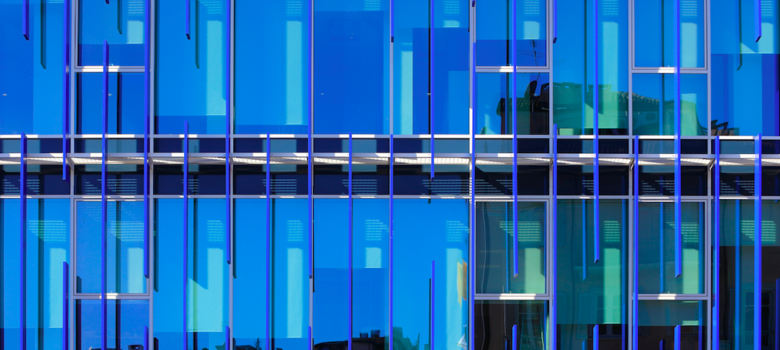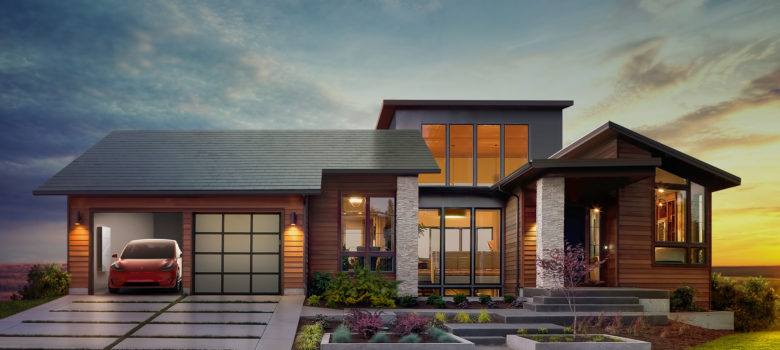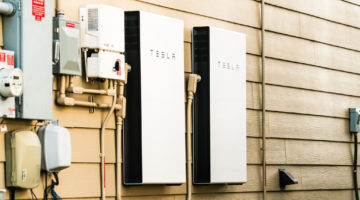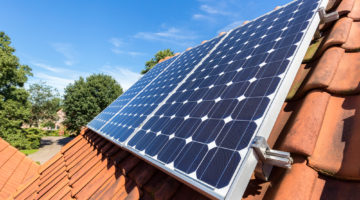
What makes solar glass different from traditional panels?
BIPV – building-integrated photovoltaics – are solar panels designed to replace conventional building materials in parts such as the roof, skylights, facades and windows.
The key difference between this technology and traditional solar PV is that panels are built into the building rather than being tacked-on. This means there’s more of a relationship between aesthetics and functionality; it is all about getting a balance so that one is not at the expense of another.
This week, we visited Polysolar, a Cambridge-based company founded in 2007. They are pioneers of thin-film solar panels and they gave us an introduction to the technology.
There are currently two types of BIPV available, and one more in development. Before we discuss these, let’s start at the beginning- with crystalline silicone technology. These are the blue/black metallic solar PV panels you’re probably familiar with. To work at a good efficiency, they are also thick and opaque in colour, so are not ideal for integrating into buildings. This is why companies such as Polysolar are developing alternatives.
What solar glass products are currently available?
- Thin-film modules. These have been around for a few years. They can be designed into the fabric of a building and can perform in conditions/locations where crystalline silicone panels cannot. However, the amorphous silicone they are made from is naturally orange in colour, and only up to 20% transparent.
- Colourless PV glass. This is black, with varying levels of opacity. It can be up to 50% transparent – much more than traditional PV. They can be used for instance in balconies, skylights or in facades (alternated with standard windows). Thin film panels work in non-optimal conditions, in lower light and higher temperatures. This means a longer day of solar gain compared to ‘traditional’ panels. If double glazed, they have a U-value of less than one, meaning the energy efficiency of the building is not compromised. However, they are expensive to produce and transparency is limited. They cost approximately twice that of commercial quality glazing.
What are the benefits of thin-film solar panels?
Aside from that they can be installed as part of a house, these panels actually perform better in many ways:
- They tend to be less affected by high temperatures – it doesn’t reduce their performance as much as it does other types.
- The new panels also insulate better than standard glass (a reason why people sometimes shy away from designing windows with glass facades).
- Polysolar’s modules operate in as little as 10% sunlight – although PV panels positioned at the right angle on a roof will receive more light than vertical panels.
- The panels are designed to reduce heat gain – so they will get less warm in summer than other properties with glass features.
- They are highly customisable – any colour/opacity of backing can be included to make panels matte or hide the pin stripes. This does slightly affect solar gain though.
- It is a relatively cheap and easy way of achieving a BREEAM (zer0-carbon rating) on your building.
Are there any downsides of thin-film solar panels?
Thin-film modules and new ultra-thin panels are less efficient than the older technology. However, the yield per unit area of solar elements in thin-film and ultra-thin film, although currently lower, are rising by around 1% per year. With research and development, they will eventually catch up with their predecessor in this respect.
What is the future of solar glass?
Polysolar is currently developing the next generation, organic polymer pholtovoltaics. They estimate that this new ultra-thin solar panel will be ready for commercial use in 2 years. The idea is that it will be almost fully transparent, and therefore suitable for use in more applications and styles of building. It will work on most surfaces, at most angles – placement will affect yield, but not as much as traditional panels. It is also hoped that the new method of production will keep costs down.
Today’s panels are already being designed into new and existing buildings, including office blocks in Canary Wharf. Organic polymer photovoltaics could conceivably replace all windows/glass in new builds, once it is transparent. It will always be ever so slightly tinted but not pixellated like its predecessors.














I am interested in installing solar glass in my home as part of a retrofit. I am not sure whether this is a viable idea, but basically I want the house to pretty much power itself, so looking at getting solar panels on the roof, and then getting solar glass in each of the windows. I also can’t see any prices in this article. Do you have any approximate prices you could share? From what I understand solar `PV is about £1250 per KW.
Hi A1935Theeco, unfortunately solar glass is still very much in the development phase. I think the future of solar glass is bright, especially given the fact that architects and builders are using far more glass in new builds than they have done previously. That being said, it will definitely be far more expensive than the £1250 per KW you have quoted above for solar panels. I think if you are doing the build in the near future, then my advice would be to maximise the solar panels you put on your property and potentially leave the solar glass until your next build (provided you are going to live in the property for 5-10 years!!)